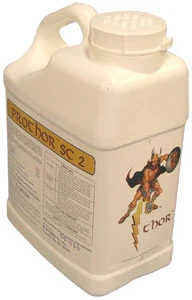
ProThor SC 2 from Ensystex is labeled for control of a wide range of turf and ornamental pests as well as termites. Some termiticides work by not letting termites pass through an area that has been treated with them. Termites, when they encounter soil treated with this type of termiticide are repelled. These termiticides are referred to as repellents. In contrast, some termiticides work by allowing termites to "pass through", thereby setting a deadly trap. These termiticides that allow termites to pass through are referred to as non-repellents. Imidacloprid belongs to the non-repellent group of termiticides. You might wonder, why is it an advantage to not repel termites ants to instead let them pass? Here's why.When applied to the soil at recommended concentrations, termites can't detect imidacloprid in the soil. This means termites foraging in imidacloprid treated soil for food are not repelled but instead pass through it like the imidacloprid isn't even there. This penetration results in these foraging termites being exposed to imidacloprid which transfers from the soil onto the exterior of their bodies. Because the toxic action of imidacloprid is delayed, only later are the imidacloprid contaminated termites killed by their exposure to imidacloprid treated soil. For this reason, imidacloprid is referred to as a non-repellent termiticide. Prothor puts the proven power of imidacloprid to work for you against a wide range of perimeter invading ants. Prothor can be used at almost all points on your customer's property where ants nest, congregate and forage. Prothor puts the proven power of imidacloprid to work for you against a wide range of perimeter invading ants.